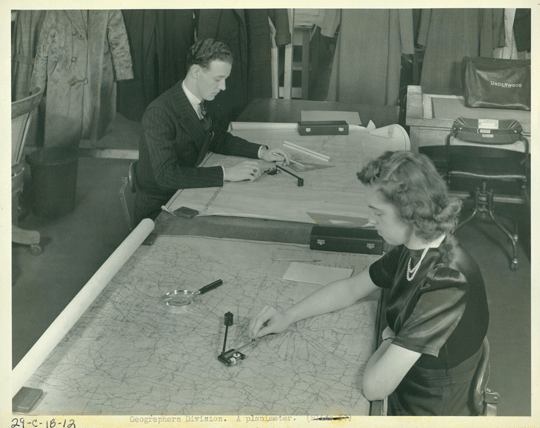About the same time that Sang and Wetli were working on planimeters, the Swiss mathematician Jacob Amsler was figuring out how to make the instrument smaller, less expensive, and easier to use. By 1854, he had eliminated most of the complex mechanisms typical of earlier designs, reducing the planimeter to two arms connected with a pivot. One arm was anchored at the end away from the pivot, and one arm traced the drawing. Because the pivot and both arms can move around the anchor, the motion of the tracer arm is graphed with polar coordinates instead of linear x-y axes. Thus, this form of planimeter is called a polar planimeter. Since the pivot moved back and forth, it traced an area whose net measurement was zero. This meant that the area traced by the tracer point exactly equaled the area of the closed curve the user was measuring. This area was equivalent to 2π multiplied by the product of the length of the tracer arm, the radius of the counting wheel on the tracer arm, and the number of revolutions completed by the counting wheel. Again, mathematicians today work out the detailed mathematics of the operation of Amsler's planimeter with Green's Theorem.
By 1857, Amsler opened a highly successful workshop that sold 50,000 polar planimeters of six different types all over the world in its first 60 years. Other manufacturers of scientific instruments also copied his design, including Hine & Robertson of New York City and American Steam Gauge & Valve Manufacturing Company of Boston. A prominent Swiss modification of the Amsler planimeter is featured on the next page. Planimeters directly from Amsler or on his design were sold by American retailers to universities, engineers, and factory managers until at least the 1930s.

